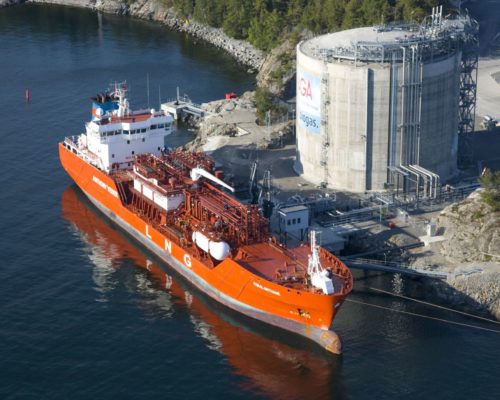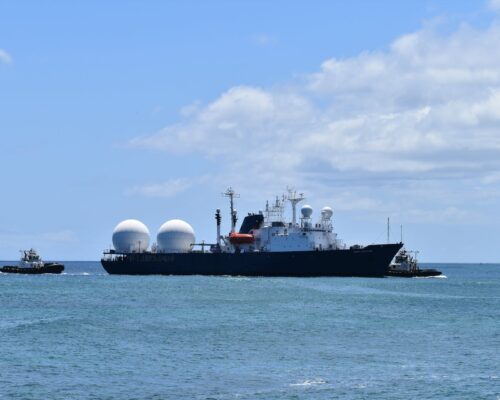What is LNG Used for?
Source: Reuters
24 March 2022 – by Eric Koons
Liquefied natural gas is a significant energy source worldwide, so what is LNG used for? LNG is used to generate power, cook, heat or cool homes, transportation, and many other purposes. LNG is a surprisingly versatile fuel, which is why it has such high demand. According to IEA, in 2020, 24% of global power generation came from natural gas. And global natural gas consumption increased by 4.6% in 2021. Global LNG trade is also growing by leaps and bounds.
What is Natural Gas?
Natural gas is an odourless, colourless gas consisting of short carbon chain compounds. Methane is the most significant at 70% to 90% of its composition.
Natural Gas Production and Power Plants
As a fossil fuel itself, using natural gas for power contributes to rising GHG emissions. However, it is less climate-polluting than coal, releasing less carbon dioxide and less particulate matter (PM). Therefore, natural gas use and the number of LNG projects will likely increase as it fuels the world’s energy transition towards net-zero emissions.
However, with rising supply and demand issues globally, natural gas prices have fluctuated. This is causing an energy crisis in natural gas-dependent countries. IEA considers this a stark reminder for natural gas-dependent countries to hasten their transition towards an infrastructure of renewables and greater energy security.
LNG vs Natural Gas: Is LNG better than Natural Gas?
While liquefying natural gas makes LNG feasible to transport natural gas, it is expensive to produce, transport, and store because it requires -162ºC to remain in its liquid form. It also requires special equipment to handle cryogenic temperatures. Alternatively, it is viable to move liquefied natural gas produced in barrels to areas with no fossil fuel or natural gas pipelines. Hence, it is a viable alternative power source in areas without a natural gas pipeline. Interestingly, it can also be converted back to gaseous form from its liquid state.
Natural gas, in its standard form, is less expensive than LNG. From an environmental point of view, natural gas has a much lower environmental impact than other fossil fuels. Although, LNG use in the form of natural gas, still has an environmental impact because of the large expenditure of energy it needs to liquefy, transport, and regasify.
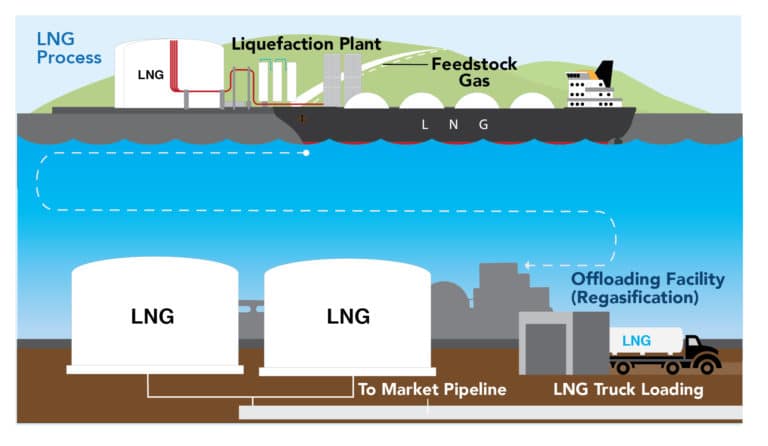
Extracted natural gas can also be converted to Compressed Natural Gas (CNG), which can be transported through pipelines. Similar to liquified natural gas, it is colourless and odourless. It also occupies less space and uses only 1% of the volume it occupied as extracted natural gas. However, unlike LNG, it does not require below -160ºC or special handling equipment for cryogenic temperatures to maintain its state.
Can Liquefied Natural Gas (LNG) be used in Cars?
While LNG occupies a much smaller volume than compressed natural gas and can be used as transportation fuel, making it cost-efficient to transport over long distances, it is still not an economical fuel source for passenger cars. Average passenger cars stand idle more often, which gives rise to high evaporative losses. Further, the use of LNG in vehicles requires cold storage facilities at roadside refuelling stations and special fueling equipment to handle cryogenic temperatures. Moreover, cars need specialized dual-fuel engines to handle it. These requirements and the cost of producing LNG make it a relatively expensive fuel for passenger cars.
Alternatively, LNG is viable for larger trucks. Compared to diesel-powered trucks, trucks that run on LNG emit up to 75% less NOx emissions and 13% less well-to-wheel CO2 emissions. While the technology to use LNG as a transport fuel is available, it will likely remain a niche market due to price.
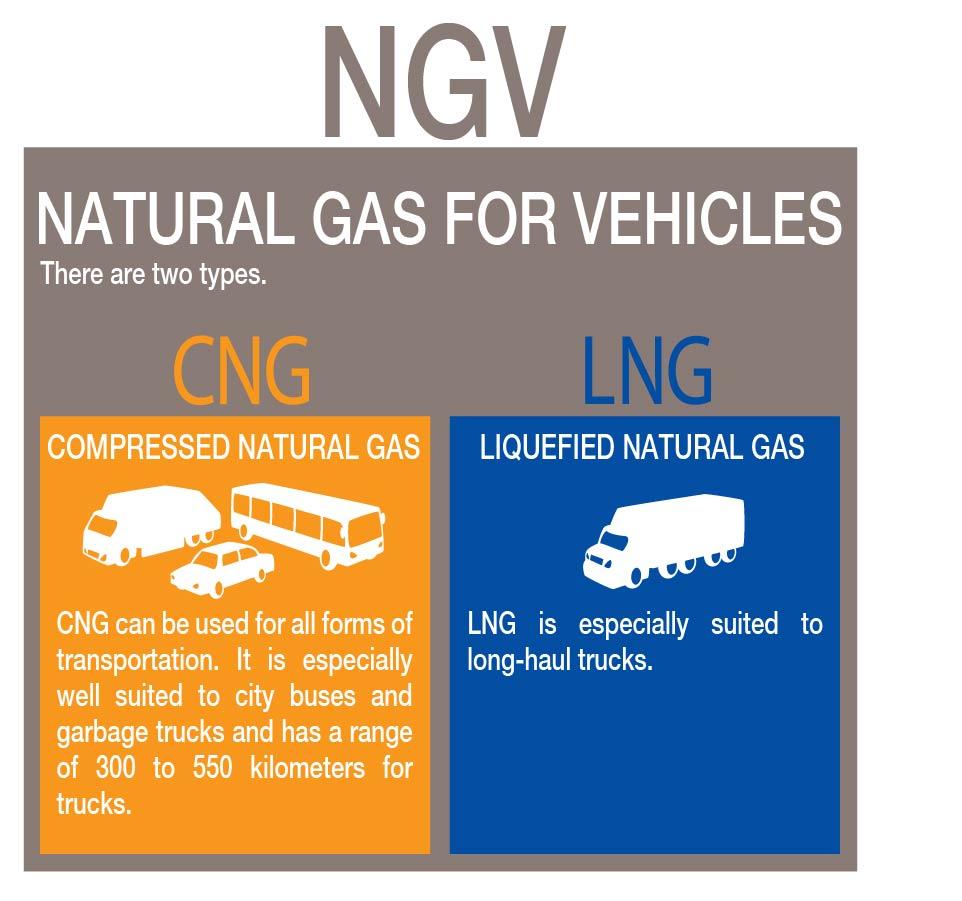
Is LNG used in homes?
The most common forms of gas for homes are CNG and LNG. Natural has a variety of domestic uses. These include heating and cooling, power for cooking, and laundry dryers. While LNG is a good energy source for homes, CNG is the preferred form as it is easily available in pipelines, while LNG is ideal only for transporting natural gas. LNG, however, is viable for domestic purposes in areas where there is no pipeline access.
Go further with LNG
This article is part of our ultimate take on Liquefied Natural Gas.
We will discuss more related topics in the following articles, such as Major LNG projects to keep an eye on.
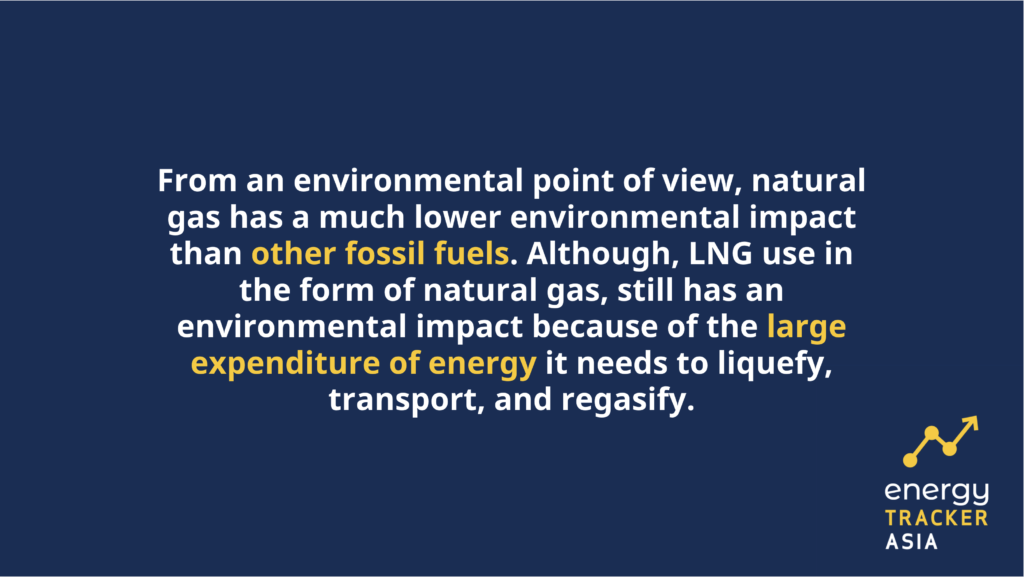
by Eric Koons
Eric is a passionate environmental advocate that believes renewable energy is a key piece in meeting the world’s growing energy demands. He received an environmental science degree from the University of California and has worked to promote environmentally and socially sustainable practices since. Eric’s expertise extends across the environmental field, yet he maintains a strong focus on renewable energy. His work has been featured by leading environmental organizations, such as World Resources Institute and Hitachi ABB Power Grids.
Read more